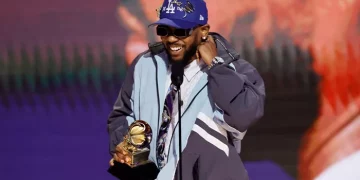Video games have evolved beyond mere entertainment, transcending into immersive, cinematic experiences that deeply resonate with players and impact popular culture. Among these, certain games stand out for their compelling storytelling, comparable to the emotional impact of great movies. Notable examples include the Ezio Trilogy of Assassin’s Creed, God of War, and Grand Theft Auto V. However, the Red Dead Redemption duology stands as a pinnacle of storytelling in the gaming world.
In 2010, Rockstar Games released “Red Dead Redemption,” introducing players to the captivating tale of reformed outlaw John Marston. Set during the decline of the American frontier in 1911, the game delves into themes of violence, faith, law, order, racism, and masculinity. The story revolves around Marston’s struggle with his past as government agents coerce him to hunt down his former gang members in exchange for the release of his captive wife and son. The game’s open-world brilliance and enduring quality continue to captivate players even after 13 years.
In 2018, Rockstar followed up with “Red Dead Redemption 2,” a prequel to Marston’s story set in a fictionalized United States in 1899. Players embark on the journey of Arthur Morgan, a prominent member of the Van der Linde gang, which also features a young John Marston. The game explores the decline of the Wild West and confronts Morgan with challenges posed by the government, the rise of big business, and personal betrayals.
“Red Dead Redemption 2” stands as one of the most emotionally profound and comprehensive games ever created, exemplifying video games as an art form. Its narrative impact is so profound that it leaves an indelible mark on players.
The profound storytelling in the Red Dead Redemption games was a deliberate pursuit by Rockstar Games’ co-founders, the Houser brothers. In their effort to engage “ageing gamers” between 18 and 35, who seek more stimulating experiences than traditional video games, they incorporated cinematic elements to elevate the storytelling. Advanced motion-capture technology and the Euphoria system brought realistic, cinematic action to life, enhancing character interactions.
The development team at Rockstar drew inspiration from a multitude of movies, which significantly influenced the game’s direction. For instance, classics like “The Wild Bunch” and “The Treasure of the Sierra Madre” inspired the Mexican sequences, while “Heat” influenced action sequences beyond the traditional Western genre.
Furthermore, the designers took inspiration from Clint Eastwood’s iconic western movies, particularly “Unforgiven” and “High Plains Drifter.” “Red Dead Redemption” and its prequel/sequel explore the “Death of the West” theme, a departure from the conventional “Myth of the West” found in classic Western films. The team aimed to deliver authentic gameplay experiences, encompassing classic Western moments like Mexican standoffs, horse capturing, stagecoach driving, and buffalo hunting.
Notably, the connection to Clint Eastwood’s “Unforgiven” becomes evident in both “Red Dead Redemption” and “Red Dead Redemption 2.” The first game focuses on the death of the Old West, akin to the central theme of Eastwood’s 1992 epic. In “Red Dead Redemption 2,” a side-quest titled ‘The Noblest of Men, and a Woman’ contains explicit references to “Unforgiven,” with story elements mirroring the movie’s narrative.
The enduring legacy of the Red Dead Redemption games lies not only in their immersive storytelling but also in their cinematic inspirations, paying homage to iconic Western films and presenting video games as a medium capable of delivering profound and emotionally impactful experiences.



























